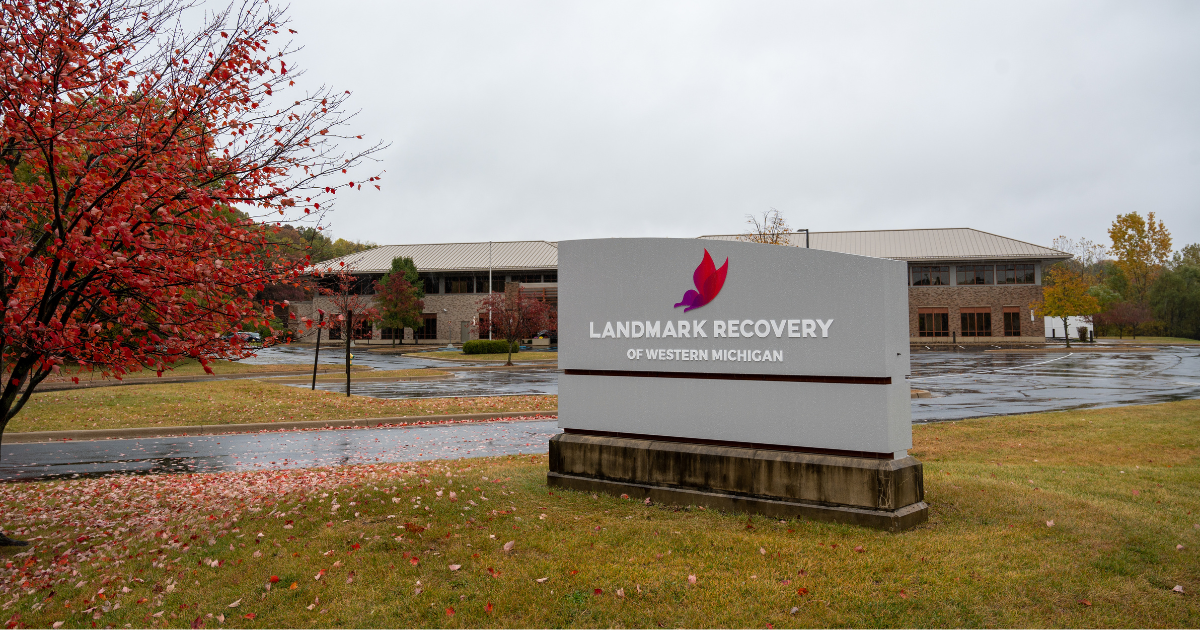In the United States, the drug crisis has become a major media talking point and is even becoming prominent in the political sphere as well as we are seeing more opioid withdrawals and detox. The drug epidemic, mainly fueled by opioids and prescription pills, has led to deaths of hundreds of thousands of Americans over the past few years and has caused addiction for millions more.
According to the National Institute on Drug Abuse, the opioid crisis has lead to hundreds of thousands of overdose. In fact, NIDA says that more than 130 people in the United States die every day from opioid overdoses.
The drug crisis is a serious issue and should be treated as such. If neglected, the problem could exacerbate and the country could eventually become worse off than it already is. According to data from the White House, in 2016, there were more than 2 million Americans who had an addiction to prescription or illicit opioids.
Opioid Withdrawal
Opioids and opiates are drugs that are used to treat pain. Unfortunately, these drugs can lead to addiction and dependence. Eventually, the issue can become serious enough to lead to withdrawal problems. Opioid withdrawal is described as a moderate to severe illness that is similar to the flu. Some common symptoms of opioid withdrawal include:
- Agitation
- Anxiety
- Muscle aches
- Insomnia
- Sweating
Eventually, the problems can cause even more issues. Some of these symptoms include:
- Abdominal cramping
- Diarrhea
- Dilated pupils
- Nausea
- Vomiting
All opioid agents produce similar withdrawal signs and symptoms, however, there is some variation about severity and time of onset, duration of symptoms and more depending on the duration of use, how much was used, and the intervals between doses.
For example, heroin withdrawal will typically begin eight to 12 hours after the last heroin dose and will subside within about three to five days. Meanwhile, methadone withdrawal normally begins 36 to 48 hours after the last dose and peaks after about three days but will take about three weeks to fully subside.
What Is An Opioid?
An opioid is a drug or substance that is derived from opium and the poppy plant. Opioids have become a serious problem in the country over the past couple of decades. This is, in part, due to pharmaceutical manufacturers pushing their products on to doctors and patients to make them more common across the country. According to Medline Plus, in 2016, there were almost 950,000 people using heroin. In the same year, about 11.5 million people were using narcotic pain relievers in a nonmedical fashion.
Some commonly used opioids across the country include:
- Heroin
- Oxycodone
- Hydrocodone
- Codeine
- Methadone
- Morphine
As opioids become more prevalent across the country, it is important to know what to look for when identifying drug abuse.
Avoiding Withdrawal
For those who are taking prescription opioids, it is important to learn how safely get yourself off of opioids without going through withdrawal. Learning how to taper yourself off of your opioid prescription will help you avoid some of the major problems associated with opioids use.
How To Taper
To taper yourself off of your medication, you can follow a few simple guidelines. For instance, decreasing the original dose 10 percent per week is a reasonable starting point. Some patients who have taken an opioid for a long time may find it more beneficial to taper off even slower. If the case is severe enough, it is sometimes best for you to receive psychosocial support.
It is important to understand that most people who take opioids have improved functioning without worse pain after tapering opioids. Some patients even experience improved pain after a taper, even though pain may briefly get worse.
If you can safely reduce your opioid use over time, you can effectively avoid withdrawal symptoms and addiction that may require a treatment center.
Drug Detoxification
Detoxification is a set of interventions aimed at managing acute intoxication and withdrawal. It denotes a clearing of toxins from the body of someone who intoxicated or dependent upon substances of abuse.
Detoxification is something that can happen in a medical and non-medical setting. A lot of times, when people look to get themselves clean from drugs or alcohol, they may try and at-home detox method. However, at-home detoxes can lead to many problems, even life-threatening complications.
Because of this, it is best to seek out a treatment center or a medical setting that can provide you or your loved one with a medically supervised detox program.
Opioid Detox
Opioids are highly addicting and the use of the drugs can lead to withdrawal symptoms. While the withdrawal symptoms associated with opioids aren’t as dangerous as some other drugs, they can still be highly unpleasant and lead to intense discomfort, a serious problem for those who are trying to go through recovery.
While opioid withdrawals are common for people who regularly use the drug, there are options for people to help them with opioid withdrawal symptoms. There is much evidence that shows that patients who are addicted to opioid painkillers achieve good results with detoxification.
Medication-assisted treatment is a common method for those going through detox. Management of this syndrome without medications can produce needless suffering. Some common forms of medication-assisted treatment include methadone, suboxone, and Vivitrol. All of these types of medications have been proven to be effective in helping patients get themselves off of their respective drug and deal with less-intense withdrawal symptoms.
Alcohol Detox
The withdrawal symptoms of alcohol can be especially harsh and can lead to a number of health risks. The signs and symptoms associated with acute alcohol withdrawal generally come about within 6 to 24 hours after someone had their last drink. Alcohol withdrawal may even begin when the patient still has significant blood alcohol concentrations. Symptoms for alcohol withdrawal can include:
- Restlessness
- Anorexia
- Tremors
- Insomnia
- Poor judgment
- Delusions
As mentioned before, alcohol withdrawal can lead to a number of major health problems, some of which can even become fatal. Symptoms like seizures, delirium tremens and dysrefulation of body temperature, pulse, and blood preserve are all outcomes of severe alcohol dependence that can lead to fatal consequences. Other medical complications can include infections, gastrointestinal bleeding, undetected trauma, hepatic failure, cardiomyopathy, pancreatitis, and more.
Three Detox Components
According to one source from the Substance Abuse and Mental Health Services Administration, there are three essential components or steps when it comes to offering medically assisted detoxification:
- Evaluation — The process of evaluation involves testing for substances in the bloodstream. During this, the treatment centers will measure concentrations of these substances and will also screen for co-occurring mental and physical disorders and conditions. During the evaluation, treatment centers will work to understand the levels of treatment the patient will need following detoxification efforts.
- Stabilization — Stabilization includes the process of medical and psychosocial assistance to help a patient get through acute intoxication and withdrawal symptoms that they may be experiencing. This process lasts until the patient is medically stable, fully supported, and in a substance-free state.
- Preparation — The final component of detox involves getting a patient prepared for the next steps of treatment. During this step, patients learn the importance of following through with their substance abuse treatment program.
Lucemyra
In 2018, the Food and Drug Administration announced the first medication to help with reducing opioid withdrawal symptoms in adults. Opioid withdrawal symptoms can begin as early as a few hours after the drug was last taken. The drug that was approved was called lofexidine, brand name Lucemyra. By alleviating issues related to opioid withdrawal, Lucemyra can help patients complete their discontinuation of opioids and facilitate successful treatment.
Lucemyra can help with reducing withdrawal symptoms but it is not the only form of medication-assisted treatment available. For example, methadone is commonly used to help users wean themselves off of their respective addictions. With that said, methadone does cause many overdose deaths each year and can lead to an addiction of its own. Meanwhile, there are other options available when it comes to medication-assisted treatment such as naloxone (Suboxone) and Vivitrol.
Suboxone can be helpful as it is a partial agonist, it attaches to the same receptors as opioids and works to reduce their effects by blocking them from the same receptors. Meanwhile, Vivitrol completely blocks the opioid receptors and doesn’t give the users the opportunity to feel the effects of opioids.
Neonatal Abstinence Syndrome
When we think of withdrawals, including opioid withdrawals, our minds immediately think about older adults and even adolescents who are using the drug and experience health-related problems when they stop. Unfortunately, drug use doesn’t always just affect the user, it can be a problem that affects others in proximity. One prime example of this is neonatal abstinence syndrome.
Neonatal abstinence syndrome affects newborns and fetuses who are exposed to opioids and other drugs while in the womb. During this time, as a fetus, they develop a dependency on these drugs and when they are born they can suffer from withdrawal symptoms associated with the respective drug that they were exposed to.
Opioid use and dependence during pregnancy is becoming more prevalent and should be considered a significant public health problem. Data from the National Survey on Drug Use and Health found that the rate of heroin use by pregnant women has increased over time and there is also a 33 percent increase in non-medical use of analgesics in the population in the past decade.
This use of drugs by the mother can cause issues for the fetus and the newborn and cause neonatal abstinence syndrome. Neonatal abstinence syndrome can cause many issues for the newborn, some symptoms include:
- Tremors
- Irritability
- Sleep problems
- Diarrhea
- Vomiting
- Seizures
- Dehydration
- Sweating
- Fever and more
Up to 75 percent of infants born to women on opioids will require treatment for opioid withdrawal.
Luckily, there are treatment options available for newborns. Treatment will depend on the drug involved and the infant’s overall health. Healthcare professionals will watch the newborn carefully for a week to check for signs of withdrawal, feeding problems, and weight gain. If the problem is severe and a baby is vomiting and dehydrated may need to get fluids through the vein.
Infants who are suffering from neonatal abstinence syndrome are often fussy and hard to calm. Tips for calming the infant down include gently rocking the child, and reducing noise and lights. Babies may also have problems with feeding or slow growth which may require high-calorie feeding and smaller feedings more often.
When it comes to opioid withdrawals, and drug withdrawal in general, it doesn’t matter if you are a senior citizen, an adolescent, or even a newborn, everyone is susceptible.
Next Steps
As the drug crisis worsens in the United States, more people will fall victim to opioid addiction. Opioids have become more prevalent in the country over the past two decades, leading to the addition of millions of Americans. Moreover, as prescriptions have increased and more individuals are using opioids like oxycodone, more people are dying as a result of these drugs.
Unfortunately, some patients try to wean themselves off their prescriptions or just stop altogether. When patients try these at-home methods from opioid withdrawals and detox, they can lead to health-related problems. If you or a loved one is experiencing addiction related issues related to opioids or other substances, seeking out the help of a treatment facility is likely the best option.
Landmark Recovery is one facility that is here to help those who have become dependent upon these prescription opioids. Landmark is a premier drug and alcohol rehab facility that offers detoxification, inpatient, and outpatient treatment to those who need it, regardless of what substance they have been using. Landmark utilizes an evidence-based, holistic approach to treatment characterized by both group and individual therapy programs that help teach patients about relapse triggers, how to avoid them, and the details about addiction. If you are interested in learning more about what Landmark has to offer, visit our website and reach out to our admissions team today.

Choose Recovery Over Addiction
We're here 24/7 to help you get the care you need to live life on your terms, without drugs or alcohol. Talk to our recovery specialists today and learn about our integrated treatment programs.




